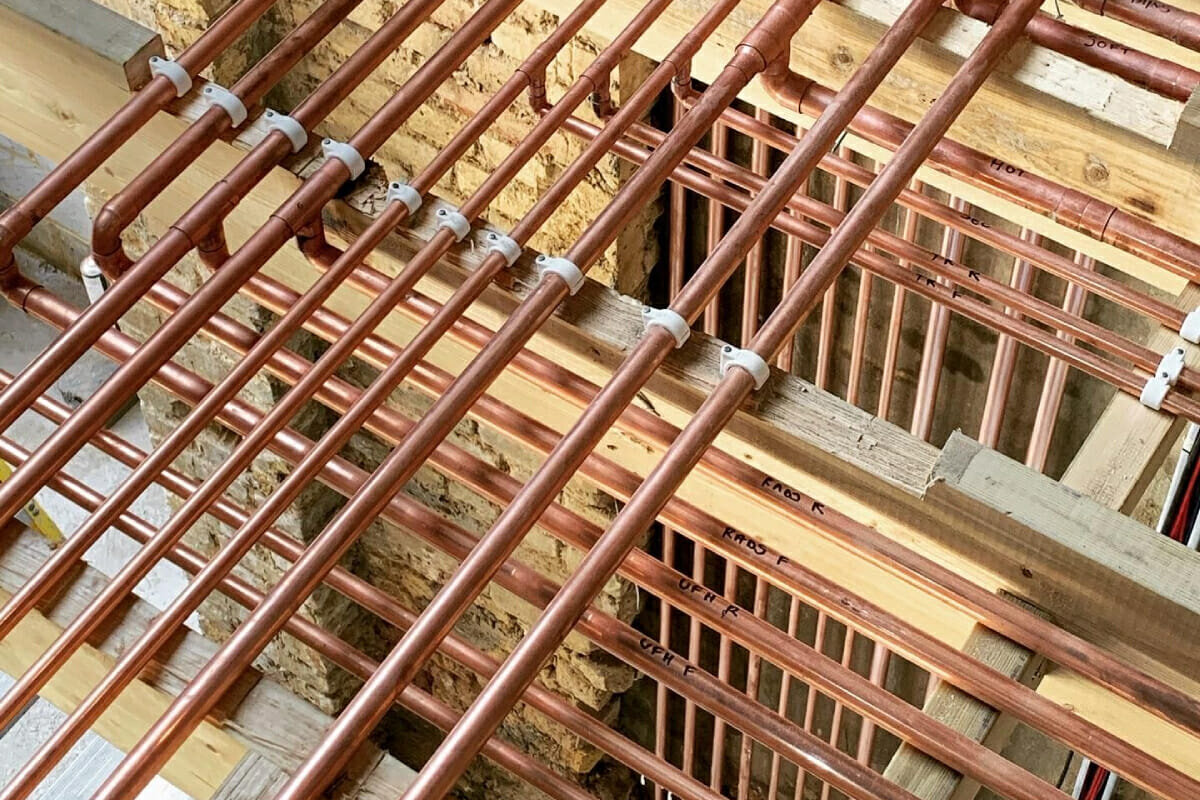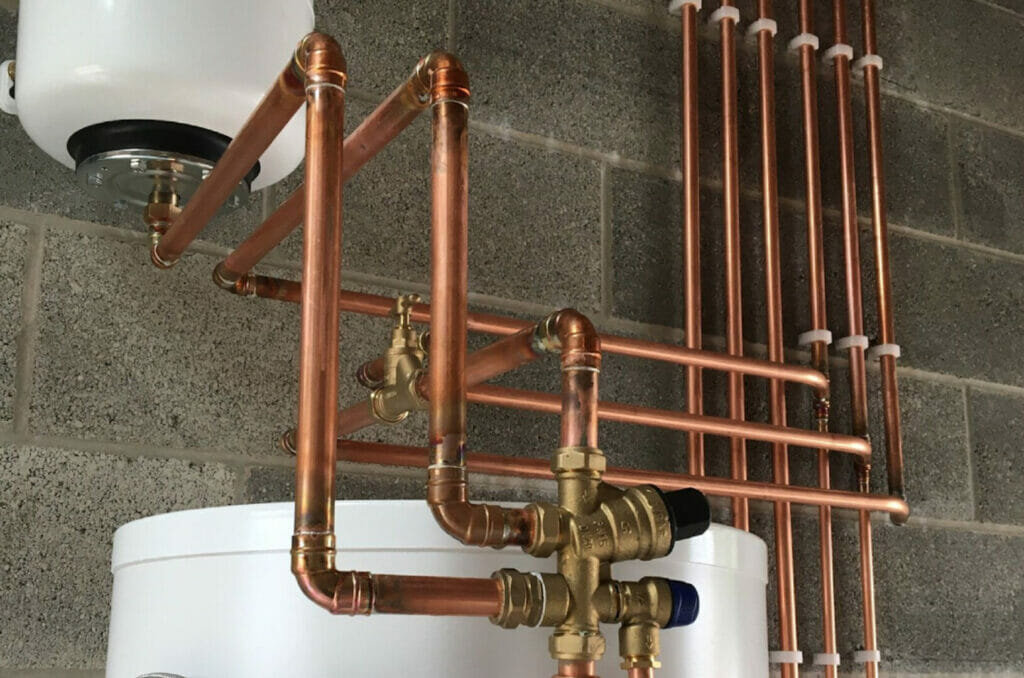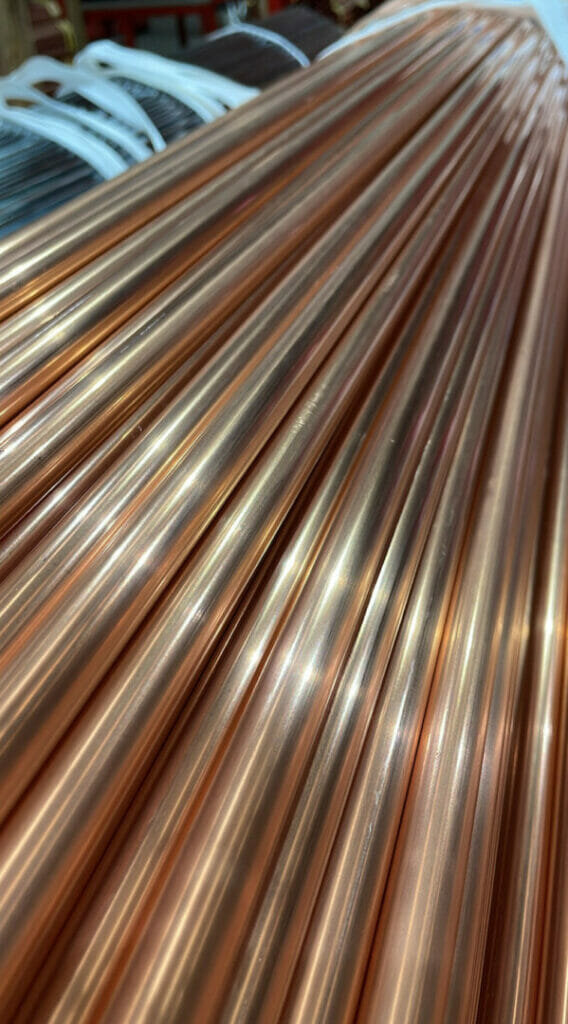
New research into water leak insurance claims, which cost UK insurers £2.5 million a day, has revealed how the increased use of plastic push-fit pipework is one of the most common causes for claims.
The research, published by the Copper Sustainability Partnership (CuSP) and the Alliance for Sustainable Building Products (ASBP), investigated the issue of escape of water in buildings and whether the type of piping material contributes to this issue.
Escape of water in buildings is a major issue for both the construction and insurance industries. In the past eight years alone, the total cost of escape of water claims has nearly doubled and, in 2018, nearly one in three of Zurich’s total claims were for water damage caused by burst pipes and escape of water.
In the new research, The Association of British Insurers states that one of the main issues which has led to an increase in volume of escape of water claims is the increased use of plastic push-fit pipework in renovation and new build projects. Ian Hollingworth, Claims Manager for EC Insurance Co., states that: “We have seen an upsurge in escape of water claims in recent years, and the increasing use of push-fit pipes has, without a doubt, contributed to this rise.”
As a result of the upsurge in escape of water claims, the insurance industry’s approach to claims of this type is hardening, resulting in higher premiums and increased excesses. The results highlight the potentially costly risks for homeowners choosing plastic push-fit pipework for their renovations or purchasing a new build property with this type of pipework.

The research also reveals how escape of water can be caused by material failure from plastic pipes if they come into contact with incompatible materials. These include caulks and fire stopping materials, leak detection fluids, pipe tapes, sealants and paints.
Leading forensic scientist, Hawkins, has investigated escapes of water from chlorinated polyvinyl chloride (CPVC) pipework in recent years. This revealed how, when used in conjunction with incompatible fire-stopping compounds, this caused pipework to become more flexible, whilst in some instances it became brittle and cracked.
Dr Christabel Evans, Materials Engineer at Hawkins, stated that: “One emerging area is escape of water from sprinkler systems. CPVC plastic pipes used in conjunction with the incompatible fire stopping compounds can cause environmental cracking of the pipework itself.”
Other factors that the research revealed are poor workmanship and increased ‘DIY’ plumbing installations, perhaps owing to homeowners attempting to install pipes themselves to save money on labour in the cost-of-living crisis. Another factor is a desire for integrated appliances and ‘hidden’ pipework, which conceals unsightly pipework behind walls and panels, making it more difficult to spot a leak.
The findings of the research show that the number and cost of escape of water claims continues to rise and it can be noted that this trend has coincided with the increased uptake of plastic pipework.
Andrew Surtees, co-founder of CuSP, said: “The research gives us great insights into how we can reduce water leak cases and claims – for example, making more appropriate material choices to help minimise pipe failures.

“When it comes to piping materials, the results shows that plastic pipes do play a part in the high number of claims, as well as the workmanship of the people installing them. Choosing this type of pipework for your renovation or purchasing a new build with this type of pipework could be a costly mistake for homeowners. However, the risks of this can be minimised by ensuring that you hire a qualified plumber to install your pipework and also by installing more durable materials, such as copper.
“Copper has exceptional durability and is often used in environments and applications where material integrity is critical. In fact, thanks to its longevity, copper pipes can – if installed with care – outlast the life of a building.”
To find out more and to read the report in full, please visit the CuSP website.
